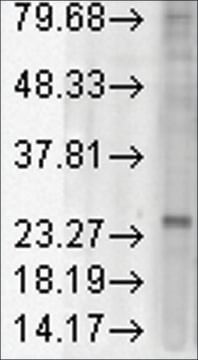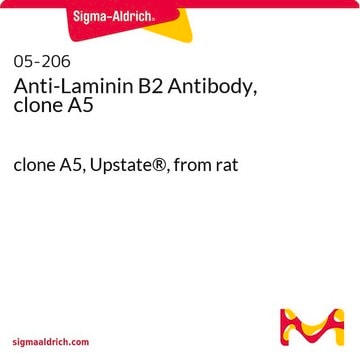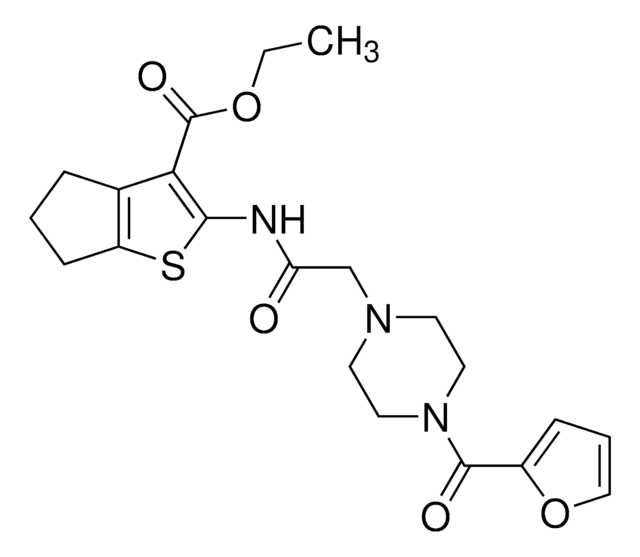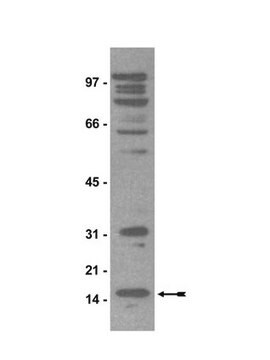420400
Anti-KDEL Mouse mAb (10C3)
liquid, clone 10C3, Calbiochem®
Scegli un formato
Scegli un formato
About This Item
Prodotti consigliati
Origine biologica
mouse
Livello qualitativo
Forma dell’anticorpo
purified antibody
Tipo di anticorpo
primary antibodies
Clone
10C3, monoclonal
Stato
liquid
contiene
≤0.1% sodium azide as preservative
Reattività contro le specie
mouse, sheep, canine, hamster, Drosophila, rat, guinea pig, human, monkey, yeast, rabbit, porcine
Produttore/marchio commerciale
Calbiochem®
Condizioni di stoccaggio
OK to freeze
avoid repeated freeze/thaw cycles
Isotipo
IgG2a
Condizioni di spedizione
wet ice
Temperatura di conservazione
−20°C
modifica post-traduzionali bersaglio
unmodified
Informazioni sul gene
mouse ... Kdelr1(68137)
Descrizione generale
Immunogeno
Applicazioni
Immunocytochemistry (5 µg/ml)
Immunoprecipitation (5 µg/ml)
Confezionamento
Attenzione
Stato fisico
Ricostituzione
Risultati analitici
RK-13 cells, Mouse liver microsomes, Rat liver microsomes, Heat shocked HeLa cells
Altre note
Huovila, A.-P., et al. 1992. J. Cell Biol. 118, 1305.
Munro, S., and Pelham, H.R.B. 1987. Cell48, 899.
Munro, S., and Pelham, H.R.B. 1986. Cell46, 291.
Note legali
Non trovi il prodotto giusto?
Prova il nostro Motore di ricerca dei prodotti.
Codice della classe di stoccaggio
10 - Combustible liquids
Classe di pericolosità dell'acqua (WGK)
WGK 1
Punto d’infiammabilità (°F)
Not applicable
Punto d’infiammabilità (°C)
Not applicable
Certificati d'analisi (COA)
Cerca il Certificati d'analisi (COA) digitando il numero di lotto/batch corrispondente. I numeri di lotto o di batch sono stampati sull'etichetta dei prodotti dopo la parola ‘Lotto’ o ‘Batch’.
Possiedi già questo prodotto?
I documenti relativi ai prodotti acquistati recentemente sono disponibili nell’Archivio dei documenti.
Filtri attivi
Il team dei nostri ricercatori vanta grande esperienza in tutte le aree della ricerca quali Life Science, scienza dei materiali, sintesi chimica, cromatografia, discipline analitiche, ecc..
Contatta l'Assistenza Tecnica.








